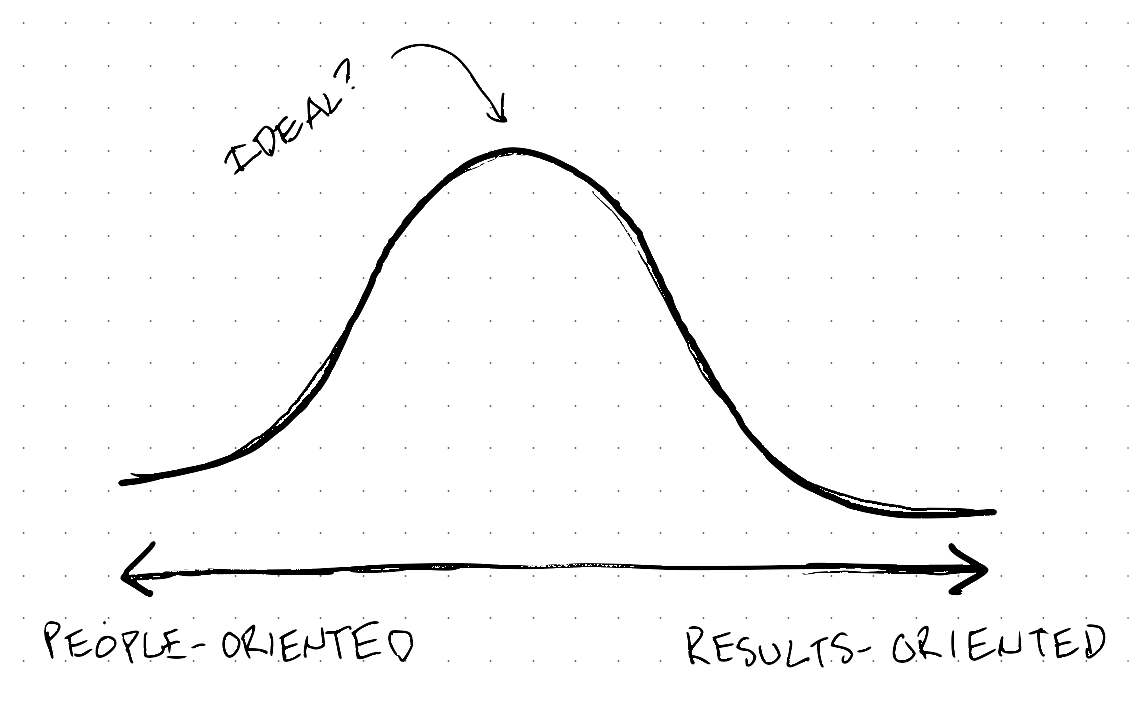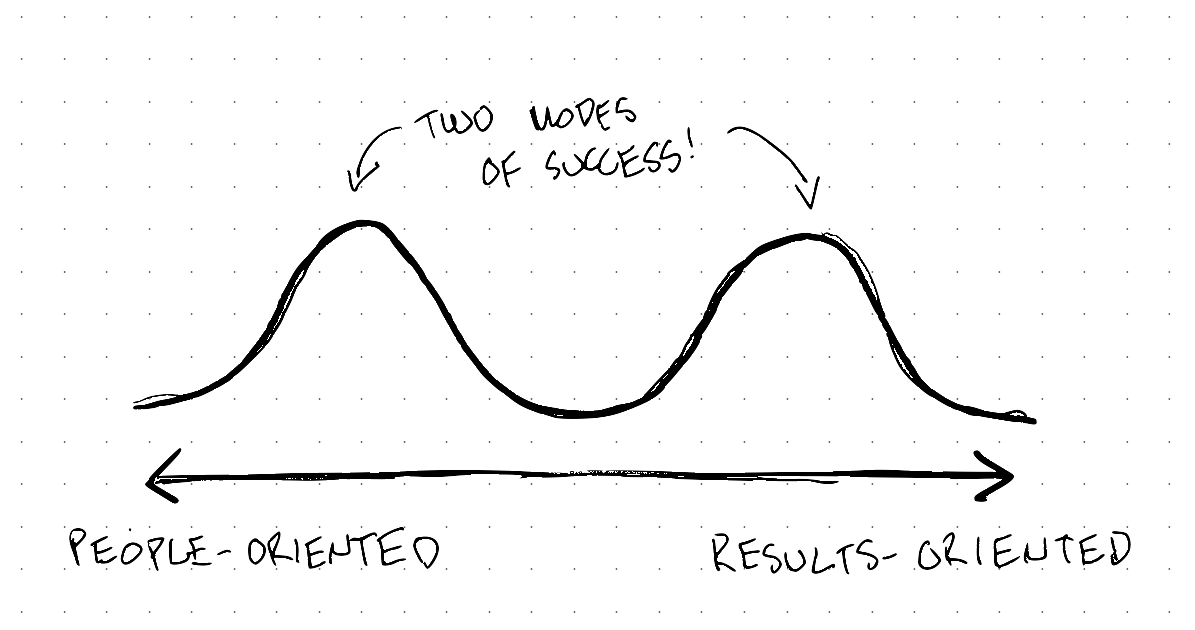People- vs Results-Oriented Management: Both Work!
Broadly speaking, there are two management styles: people-oriented and results-oriented. (This is, of course, a dramatic oversimplification. This is just one way of thinking about management styles that yields some interesting insights. All models are wrong; some are useful.)
People-oriented managers approach problems people-first: they pay close attention to the comfort and well-being of their team. They make sure everyone on the team has whatever they need to be productive, and results follow. If something goes wrong, they look for the interpersonal issues at the root of the problem.
Results-oriented managers approach problems systems-first: they pay attention to the inputs and outputs of the team, and to the results the team generated. They know that successful teams are happy teams, so they push in all directions to help their team be successful. If something goes wrong, they seek to understand what process or system failed.
There are two key insights you can gain by thinking of management style this way:
Neither mode is wrong: either can be successful; either can fail.
The first insight is that both of these management modes can be successful.
Most managers will have a “natural” style that falls into one of these two modes. This makes it easy to assume that the other mode is “wrong”. Me, I’m in the people-oriented mode, and it’s easy for me to think that results-oriented managers must be “cold”, uncaring, or jerks. On the other hand, a results-oriented manager might assume that people-oriented managers like me are ineffective, or more interested in running a popularity contest than getting things done.
Both of these assumptions are incorrect. People and results feed into and reinforce each other: staff who are comfortable and content at work produce good results. They stay at their jobs, get better, and produce even better results. And, one of the most powerful ways of making people happy at work is to be on successful teams! Teams that kick butt are terrifically fun. Great teams deliver – but “great teams” and “successful delivery” aren’t easy and simple cause-and-effect; they both create and reinforce each other. You can build great results by focusing on people, and you can build a happy team by focusing on the team’s results.
It’s equally important, though, to understand that each model has failure modes.
The failure mode of “results-oriented” is “jerk”. Think of all the managers who, when quarantines started and people were forced to work from home, kept pushing for the same level of output. These managers were so results-oriented that they failed to recognize that trying to write code while caring for a child or parent is dramatically more difficult. A manager who continues to push for the same results when someone’s personal life changes will fail. They’ll fail that person, who will hopefully be able to quit, and they’ll fail the team when results suffer because of that manager failed to adapt.
The failure mode of “people-oriented” is “ineffective”. This was me, early in my career: I cared far more about my team members’ happiness than I did my team’s output. When our results suffered, I didn’t try to improve if it meant even mildly uncomfortable conversations. Managers who are too people-oriented, including past-me, miss that being on failing teams sucks! A manager who avoids accountability or asking for better results will also fail. People hate being on failing teams, and may leave. In the worst case, failing teams get reorganized or shut down.
“Balance” is a red herring; embrace your style
The second insight is that, because both modes can be successful, you don’t need to try to fall somewhere “in the middle”. Instead, embrace the style that works for you (but learn enough about the other style to not fall into one of the failure traps).
It’s tempting to put these two styles on a spectrum:

And then to assume that successful management follows some sort of bell curve:

I don’t believe this to be true. The best managers I’ve seen don’t fall in the middle; they’re squarely in one of these modes, just not too far to one side:

There are, as I wrote above, failure modes in being too much people- or results-oriented. But there’s also a failure mode in trying to be “balanced”: aiming for the middle means giving up enough of what makes either style successful.
So embrace the style that comes most naturally to you! You just need to learn enough skills from the other mode to avoid pitfalls. Managers who find a results-oriented style easier can learn to pay enough attention to their staff and their individual needs. Managers who are more naturally people-oriented can learn about accountability and setting good targets. And so forth.
Sometimes there’s a “right way” to manage, but sometimes there isn’t. When it comes to management style, there are multiple paths to success.
A note about provenance: the key points here aren’t original. I first saw this concept and the ramifications … somewhere … many years ago. I’ve tried, many times, to discover the original, and haven’t been able to. Either my memory isn’t close enough to the real thing for a search engine to find, or the original is no longer online. I’m not sure exactly how accurate my memory is, but I am sure that this post is a mix of that idea I read a while ago and my own (flawed, I’m sure) memory. I’d love to be able to credit or cite the original author! If you happen to know where this idea originated, drop me a line.